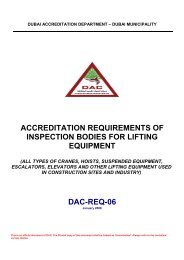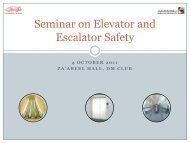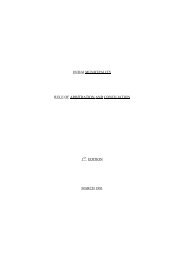Replacement of Chlorinated Solvents (CFCs, CTCs, MCFs)
Replacement of Chlorinated Solvents (CFCs, CTCs, MCFs)
Replacement of Chlorinated Solvents (CFCs, CTCs, MCFs)
Create successful ePaper yourself
Turn your PDF publications into a flip-book with our unique Google optimized e-Paper software.
Vacuum De-Oiling<br />
A new process on the market is vacuum de-oiling, an operation that removes<br />
surface oils from parts without using ozone-depleting or hazardous chemicals,<br />
water or detergents. Thermal and vacuum technology remove the oil residue<br />
on parts through vaporization. Once the parts have been loaded the heater<br />
and pump are actuated to warm and evacuate the unit's chamber. The oil's<br />
boiling point falls with pressure so heating it in a slight vacuum dries the part<br />
quickly. The system is not designed to clean materials that do not evaporate<br />
quickly such as a solid lubricant. In most cases parts can be cleaned through<br />
this one-step process in about 20 minutes or less. The vapors are condensed<br />
and collected for reprocessing or recycling. Hazardous waste disposal costs<br />
are reduced or eliminated in this process<br />
5. The use <strong>of</strong> solvents in cleaning and degreasing operations produce high or<br />
low emissions <strong>of</strong> volatile organic compounds (VOCs) that requires to be<br />
controlled for the safety <strong>of</strong> the workers as well as protection <strong>of</strong> the air<br />
environment. The following shall be done to minimize the emission <strong>of</strong><br />
VOCs;<br />
a. For non-vapor degreasers using volatile solvent, or solvent that is<br />
agitated, the cover should be a sliding, rolling or guillotine (bi-parting)<br />
type which can be opened and closed easily with one hand.<br />
b. For open-top vapor degreasers, the cover should be a sliding, rolling or<br />
guillotine (bi-parting) type which can be opened and closed easily<br />
without disturbing the vapor zone.<br />
c. For conveyorized degreasers, a cover shall be provided for closing <strong>of</strong>f<br />
the entrance and exit during shutdown hours.<br />
6. In order to determine the best cleaning and degreasing alternative(s), the<br />
four general areas are to be investigated;<br />
a) Governmental regulations – emission control and limit <strong>of</strong> discharges<br />
b) Technical feasibility – new process to meet required production, ease <strong>of</strong><br />
installation, operation and maintainance.<br />
c) Process economics - compare the economics <strong>of</strong> various cleaning<br />
alternatives costs associated with initial capital equipment; process operation;<br />
permit applications; and waste treatment, storage, and disposal. Process<br />
operation should include material, labor, maintenance, and utility costs<br />
d) Environmental, Health, and Safety - compatibility with regulatory trends,<br />
public perception about cleaning chemicals and associated risks, global<br />
warming potential <strong>of</strong> alternatives, energy efficiency, toxicity and worker<br />
safety, flammability, and emissions, effluents, and wastes generated








